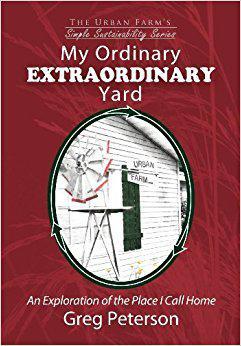Abundant Skies:
8 Principles for Successful Rainwater Harvesting Part One
by Brad Lancaster
 Reprinted with permission from Natural Awakenings Magazine
Reprinted with permission from Natural Awakenings Magazine
My interest in water harvesting arose from a desire both to reduce my cost of living and to be part of the solution rather than the problem in my desert city of Tucson, Arizona.
One of Tucson’s biggest problems is its mismanagement of water resources, pulling more each year from the water table than nature can replace. This is a practice that has dried out the Santa Cruz River, killed countless springs and wells, and severely depleted available groundwater resources.
Living in the desert has put a special emphasis on water harvesting for me, but it’s a valuable strategy for non-desert environments too. Rainwater harvesting is effective for reducing or preventing erosion and downstream flooding while improving storm-water quality. Thus, Portland and Seattle have embraced water harvesting to protect salmon populations, and Maryland is doing the same to protect the Chesapeake Bay. Anywhere in the world, water harvesting is a smart strategy for helping to recharge groundwater tables, springs, wells, and rivers.
Back in 1994, my brother Rodd was also interested in water harvesting, but as long as we were both renting, all we could do was read up on the subject. At the time, we were both self-employed, making what the government considers poverty wages. No bank would touch us. On our own, neither of us could afford to purchase a home, but together, it was feasible. We did 95percent of the renovation work ourselves and used mainly salvaged materials.
Today’s Big Picture
Since then our property value has shot through the roof. The integrated water harvesting techniques Rodd and I learned and implemented on this once-barren urban lot have transformed it into an oasis in the desert, with temperatures ranging an average ten degrees lower than our neighbors’. Our land produces approximately 25 percent of our food, which includes organic, homegrown fruits, nuts, vegetables, eggs, honey, and mesquite flour grown solely with rainwater and greywater (reclaimed household wash-water.) Our utility bills have been dropping steadily since we moved in and now run an average $20 per month.
Within our generative landscape, rainwater has become our primary water source, greywater our secondary water source, and municipal groundwater a strictly and infrequently used supplemental source (meeting no more than 5 percent of our exterior water needs). Most of our established landscape has even become regenerative by thriving on rainwater alone.
Our household consumes less than 20,000 gallons of municipal water annually, with over 90 percent of that being recycled in the landscape as greywater. Additionally, we harvest and infiltrate over 100,000 gallons of rain and runoff into the soil of our site (and, by extension, the community’s watershed) over the course of our annual average rainfall.
As a household, we’re shifting more and more to living within our rainwater “budget:” the natural limits of our local environment. As a result, we’re enriching the land, growing up to 25 percent of our food on site, creating a beautiful home and neighborhood environment – and giving back more than we take!
The further we go, the easier and more fun it gets.
Eight Principles
In the course of creating our sustainable oasis, Rodd and I arrived at eight basic principles that anyone can use to implement a successful rainwater-harvesting strategy of their own. See part two of this series (to be published in our July 21 issue of Urban Farm Lifestyle) for the specifics on the following eight principles:
- Conduct a long, thoughtful observation.
- Begin at the top and work your way down.
- Plan and manage an overflow route.
- Harvest rain as close as possible to where it falls.
- Spread out the flow of water to best infiltrate soil.
- Maximize living and organic ground cover.
- Create beneficial relationships and efficiency via “stacking functions.”
- Continually reassess ad improve your systems.
Find out more info about Brad’s books and purchase your own copy HERE
Brad Lancaster is a permaculture expert and consultant based in Tucson. His book Rainwater Harvesting for Drylands, Volume I: Guiding Principles to Welcome Rain into your Life and Landscape (2006, Rainsource Press) is available at www.HarvestingRainwater.com
*Disclosure:
Some of the links in our podcast show notes and blog posts are affiliate links and if you go through them to make a purchase, we will earn a nominal commission at no cost to you. We offer links to items recommended by our podcast guests and guest writers as a service to our audience and these items are not selected because of the commission we receive from your purchases. We know the decision is yours, and whether you decide to buy something is completely up to you.







